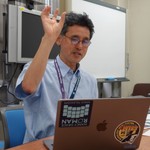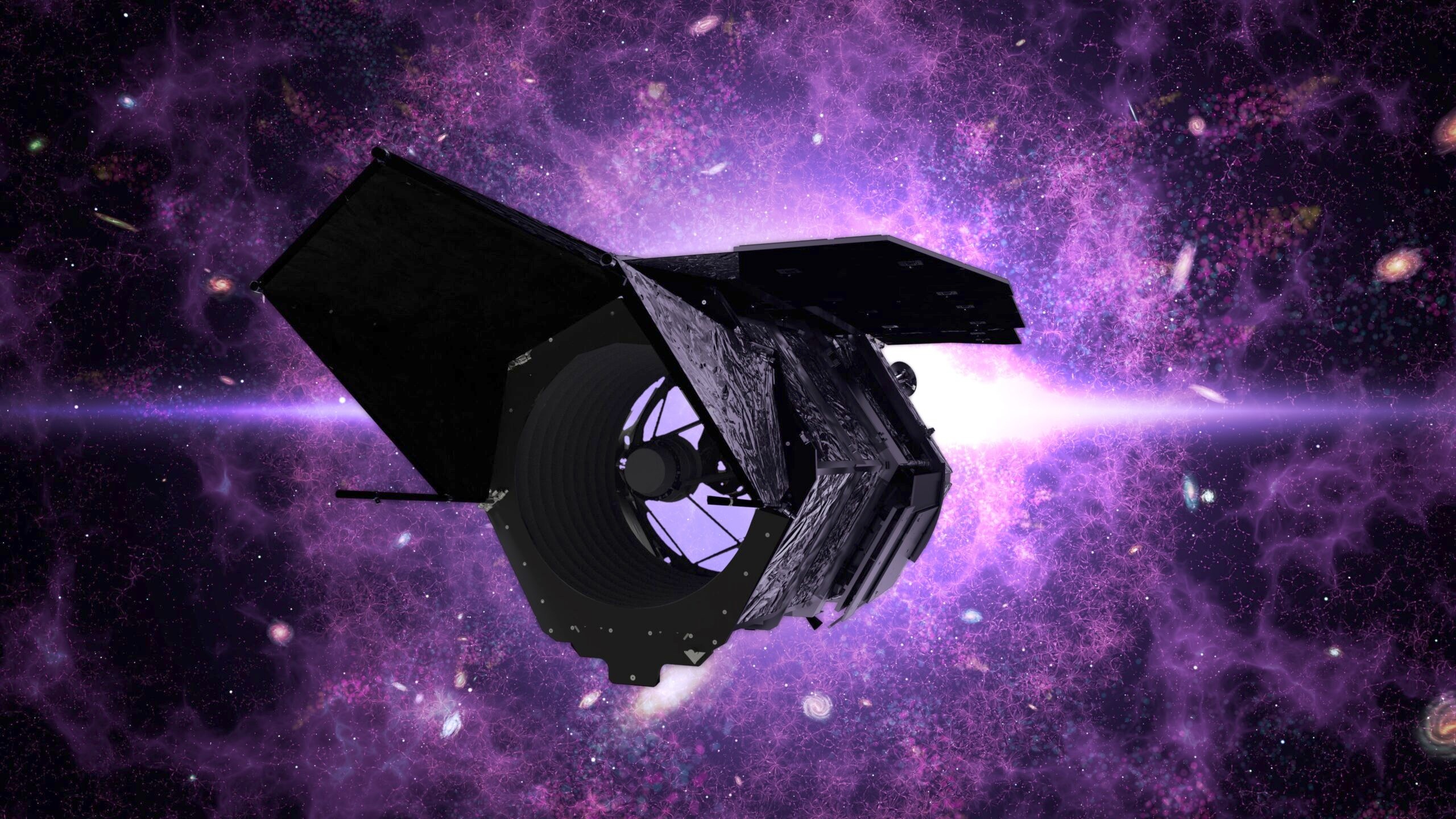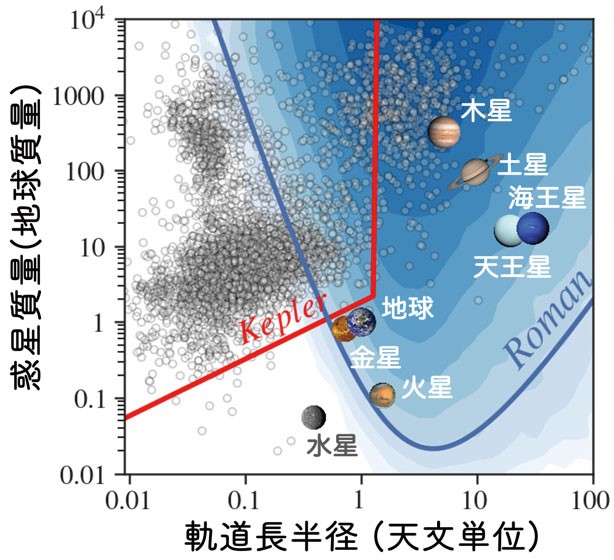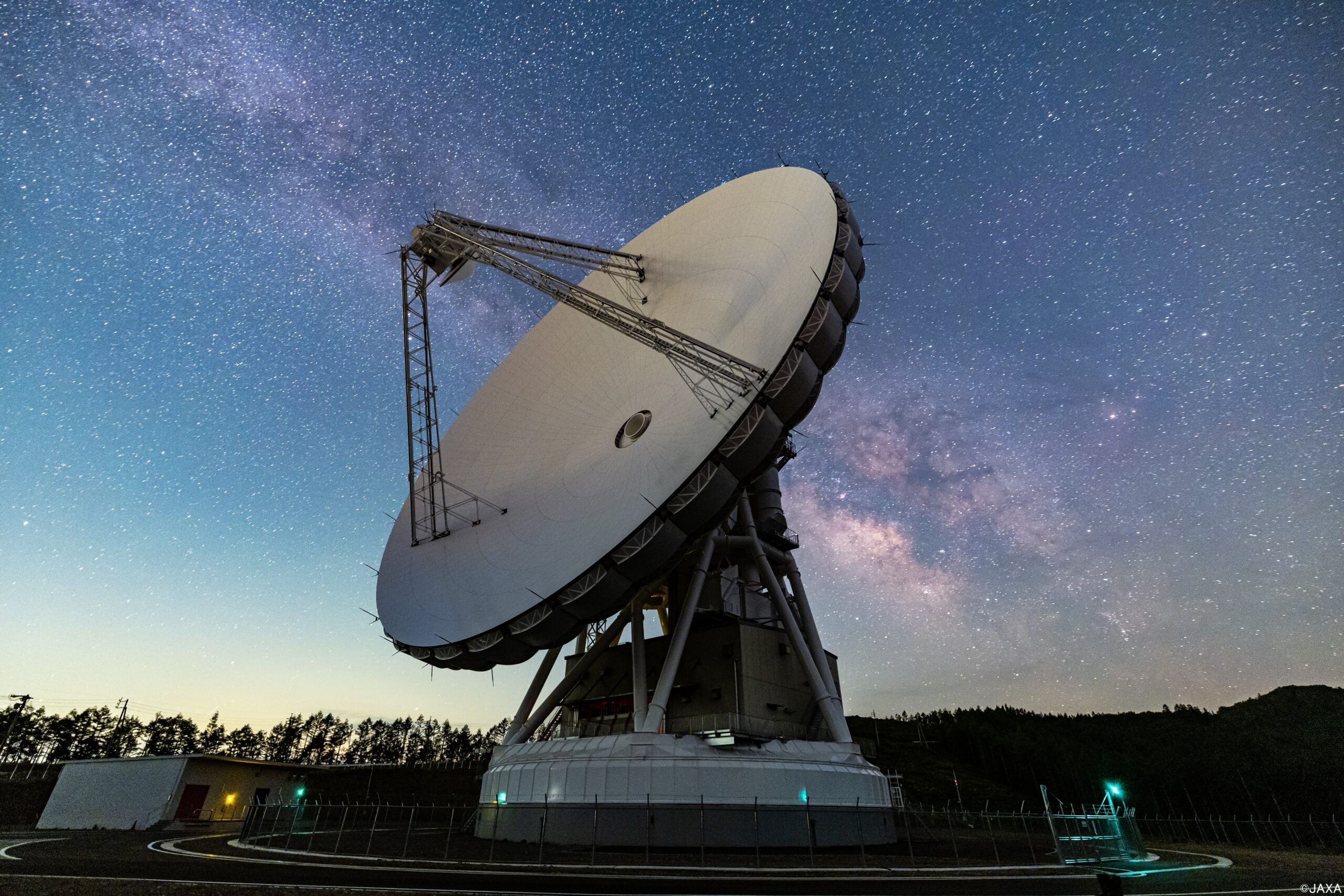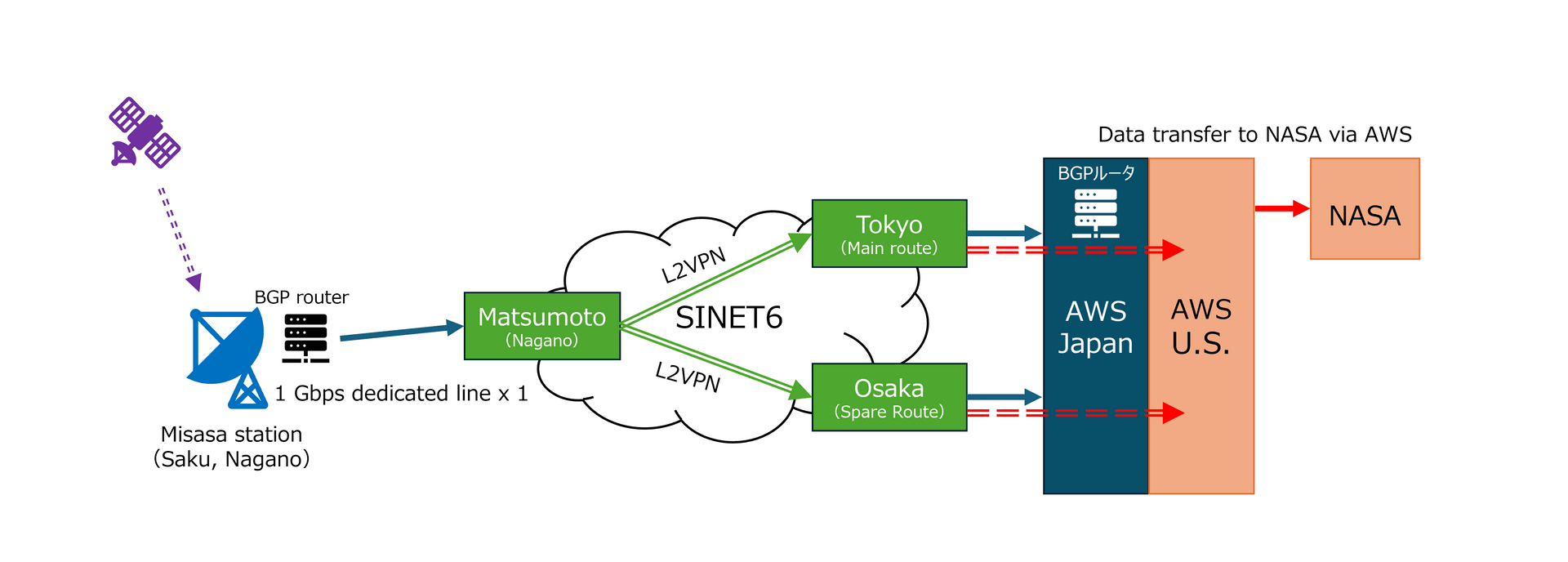
The Role of SINET6 in the “Roman Project,” Which Seeks to Clarify the Large-Scale Structure of the Universe
The Japan Aerospace Exploration Agency (JAXA) is engaged in wide-ranging activities related to space science. We interviewed Assistant Professor Takayuki Tamura of the Department of Space Astronomy and Astrophysics, Institute of Space and Astronautical Science, JAXA, about the latest space observation initiatives and development of the network environment. (Interview date: June 17, 2024)
Please give an outline of JAXA’s Institute of Space and Astronautical Science.
Tamura: The Institute of Space and Astronautical Science (ISAS) is a part of JAXA that deals with scientific research, observational astronomy and the exploration of the universe using satellites, as well as astronautical engineering in support of such activities. I specialize in astrophysics and astronomy. More specifically, I observe and analyze data on the large-scale structure of the universe, which means groups larger than galaxies. In particular, I’m involved in the “Roman Project,” which is a satellite to be launched by NASA in 2026 called the Nancy Grace Roman Space Telescope (hereinafter, “the Roman Space Telescope”).
What is the purpose of the “Roman Space Telescope” project?
Tamura: When you imagine a telescope, you’d usually think of something like the Subaru Telescope, which you find in an astronomical observatory on the ground. A space telescope is a telescope that has been launched into space using satellites. Its location in outer space allows it to gather more accurate and high-resolution data, which is why NASA has developed the Hubble Space Telescope and other large telescopes in the past.
The Roman Space Telescope is the latest such major project, and its primary purpose will be to precisely measure the shape and brightness of many distant galaxies as well as to conduct “high-precision verification of dark energy cosmology.” This is called the Hubble–Lemaître Law, so when we observe galaxies in the universe, we find that the farther away a galaxy is, the faster it is moving away from us, which is an indication that the universe is expanding. It was generally believed that the expansion of the universe would gradually slow down because of gravity. Recently, however, we have discovered that the expansion is accelerating, while the cause of this cannot be explained by gravity or other aspects of modern physics. The assumed cause of this accelerating expansion is what we refer to as dark energy. The Roman Space Telescope will conduct precise observations of the shape and brightness of many distant galaxies to precisely investigate the relationships among how matter is distributed in the vast universe, the universe’s rate of expansion, and the properties of dark energy.
Moreover, we expect that gravitational microlensing observations will help discover numerous “cold exoplanets,” which have previously been tricky to detect, as well as comprehensively elucidate exoplanet distribution. More than 5,000 exoplanets have been discovered in the period since the first observation of planets outside our solar system about 30 years ago. This is illustrated in the figure below. The horizontal axis shows the distance from the sun, with a value of 1 meaning the distance between the earth and the sun. The vertical axis shows planetary mass, with a value of 1 indicating the same mass as the earth. Overlaid are planets shown in gray and white that have been observed outside our solar system. The red line was likewise observed by the Kepler Space Telescope that NASA launched in 2009.
(prepared by Shota Miyazaki at ISAS with reference to Penny et al. 2019, ApJS, 241, 3)
We expect that the Roman Space Telescope should be able to detect planets of wide-ranging masses far from the sun, such as those found within the blue line and the blue region. In this way, its purpose is to observe how many planets there are in the entire universe and what properties they have. To achieve this, it will use a method called gravitational microlensing, which makes use of the properties of light. More concretely, when light reaches the Roman Space Telescope from a star, if another planet happens to overlap in the space between, the light will be refracted and the brightness simultaneously changed because of that planet’s gravity. This is a method of planet discovery that relies on gauging change over time. The Roman Space Telescope is expected to discover about 1,400 cold planets by observing the brightness of hundreds of millions of stars located near the galactic center with unprecedented accuracy for a total of more than ten months.
Please tell us about the involvement of Japan and JAXA in the project.
(source: Space Tracking and Communications Center, JAXA)
Tamura: The Roman Space Telescope is scheduled to conduct observations with an optical telescope that has a diameter of 2.4 m for about five years upon its launch into space, and the expectation is for it to provide important findings that can set the direction of a variety of scientific strategies, ranging from planetary exploration to the cosmological elucidation.
Japan participates as an international partner, producing and providing optical elements to add high-precision polarization observation functions. For example, when observing a sun and the planets orbiting around it, something called a coronagraph is used to block the sun’s light and capture only the light of the surrounding planets. Japan provides the coronagraph’s mask substrate, which is part of the core of the satellite’s observation device. Coronagraph masks are important in that they mask bright star images and their diffracted light, and manufacturing them requires advanced technology, thus making full use of the technological capabilities of Japanese companies.
Moreover, JAXA is contributing to this project with data reception at ground stations. The Roman Space Telescope collects a large amount of observational data, incomparably more than conventional space telescopes. For example, if you take the amount of observational data that the Hubble Space Telescope collect in 30 years or so, the Roman Space Telescope will collect more than 100 times that in five years. The Roman Space Telescope is also equipped with a recording medium, collecting several terabytes of data per day, so it will be necessary to transfer the observational data to the ground as soon as possible. NASA will have a dedicated receiving station, but it will still only be able to receive less than half of the maximum amount of data collected, which is why it is essential to have international cooperation that also involves JAXA and Europe. JAXA plans to support the operations of the Roman Space Telescope by developing and introducing a new 26 GHz band high-speed reception system at the Misasa Deep Space Station in Nagano Prefecture, transmitting the received data to NASA.
So, you will use the SINET network for the transmissions there?
We plan to connect to the nearest SINET node through a dedicated line from the Misasa station in Nagano Prefecture. Moreover, since NASA will use Amazon Web Services (AWS) in this project, AWS will be directly connected to SINET, connecting to AWS with SINET’s cloud connection service. We will mainly be using AWS’s Tokyo base, but we also have redundant access to the Osaka base as a backup route that we can switch to in case of failure. Everything is forwarded to NASA via the AWS network. By utilizing cloud services, we expect to achieve automatic synchronization even if a problem occurs during data transfer. The transmission speed of the antenna from the satellite requested by NASA is up to 250 Mbps or more. Even after reception, we want to transfer the data to NASA as soon as possible, so SINET’s fast, low-latency, and stable network will play a key role.
Please tell us about the future challenges and prospects.
Tamura: The Roman Space Telescope is an international collaborative project. It involves numerous stakeholders, including JAXA, SINET, AWS, and NASA. We basically want to operate the Misasa station unmanned. However, we expect that the received radio waves will be attenuated depending on weather and season, and power outages may occur in the event of a typhoon, heavy rain, or lightning strike. Since this will involve a NASA satellite, it won’t be possible to adjust transfer commands in real time to account for the actual conditions. I think we’ll need to keep discussing whether operations can be quickly resumed in case of failure. Considering this, I’m grateful for SINET’s around-the-clock, all-year-round operational monitoring system.
The expectation is for a lot of data to be collected during this five-year project. It may lead to the discovery of planets with earth-like atmospheres that can harbor life. My hope is that these observational data will become a steppingstone to be used by future generations of researchers all over the globe.

